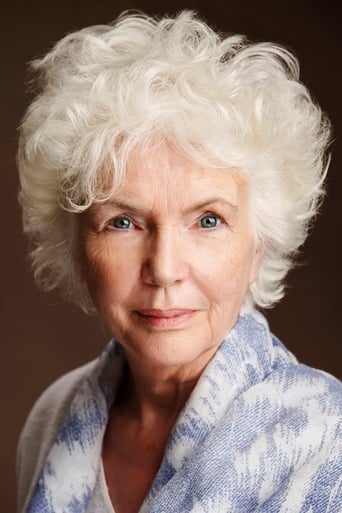Dorathen
Better Late Then Never
Borgarkeri
A bit overrated, but still an amazing film
Rio Hayward
All of these films share one commonality, that being a kind of emotional center that humanizes a cast of monsters.
Payno
I think this is a new genre that they're all sort of working their way through it and haven't got all the kinks worked out yet but it's a genre that works for me.
walter-botzan
An old man recognized his father on the photograph (from a very dubious resemblance). And the film makers haven't even bother to do at least a stupid google-research about the picture. Because when they did bother, they must've find out, that the man, who's the subject of half of the film is not some Irishman's father, but a Slovak worker named Gustav Popovic, who even sent that photo to his wife with a message - and has it also on his gravestone - AND HE IS OFFICIALLY ONE OF THE FEW POSITIVELY IDENTIFIED WORKERS ON THAT PICTURE! And that's not a secret information, but an official one - you can find it even on such sites as wikipedia. But that wasn't even mentioned, not a word about that, that it's maybe someone else on the picture - and that could've been interesting, confronting the man with that information, maybe traveling to Slovakia, meeting the relatives and find out who's wrong and who's right. And so we must watch how an old man traces his imaginary father and makes up stories. Such a shame!!! I felt pity (for the old guy) and angry for the film makers. Such an amateurism... In one sentence - the movie is too long too fair-taly too boring.
justdedicate
It's one of most recognisable pictures in the world and the documentary maker point out, everyone wants to see something of themselves in the photo. Everyone seems to know an uncle, a cousin, a grandfather who apparently sat on that famous girder. If they were all there, they probably could have filled at least 10 girders. The truth is we know very little about those men and as much as people like to believe they see their father in that picture, there are five other people who claim the same man as their relative.Does this documentary reveal anything we don't already know? Not really, the usual facts are repeated, but then the documentary maker plays his trump card: he knows the identity of two of the men! Exciting right? Two of the men come from the west of Ireland. How does he know? Their sons recognised their respective fathers. Wait, didn't the documentary maker not spent the first 30 minutes explaining everyone does this? That there is no basis for it and we all like to think we know someone who sat on that famous girder? What about the evidence? Well, he argues, they know their fathers so, you know, they just know. That's it, that's pretty much the whole basis of the documentary.It's a oddly flawed documentary. It tries to give us some background of the sort of men who risked their to earn a living as steel workers, but it's all too generic, we don't really learn anything new. The 'revelation' doesn't work as he has no evidence and he already explained himself that it's unlikely to be true. So what are left with? Not much to be honest.
beirne-2
I was disappointed in the film. I like the picture and I was hoping for a lot of research into the identities of the people in it, but a major portion of the movie was devoted to saying how good the photo is, something I already know and agree with. Meanwhile, the research is light. They know two of the names based on captions on a related picture, but let things drop. They don't try to track down the people at all. Genealogists can do this kind of research but apparently they weren't brought in. They did come up with possible identities for two of the others, and that was good, but then the movie went back to talking about how wonderful the photo was and adding some general historical background. I didn't expect a 65-minute film to be too long but this one was.
gavin6942
In Men at Lunch, director Seán Ó Cualáin tells the story of "Lunch atop a Skyscraper," the iconic photograph taken during the construction of 30 Rockefeller Plaza.As shown in the film, people today still connected to the image, despite no one knowing who is in the photo and no one knowing who took the shot (it has been credited to Charles Clyde Ebbets since 2003). Many see their ancestors in it, though there is very little to corroborate this -- the men could be Irish, Scandinavian or anything else.Ultimately, the film is interesting but never really gets to the heart of the matter and because of that drags a bit at times. While seeing the archives at Corbis is quite interesting, a few more answers might have been nice.


